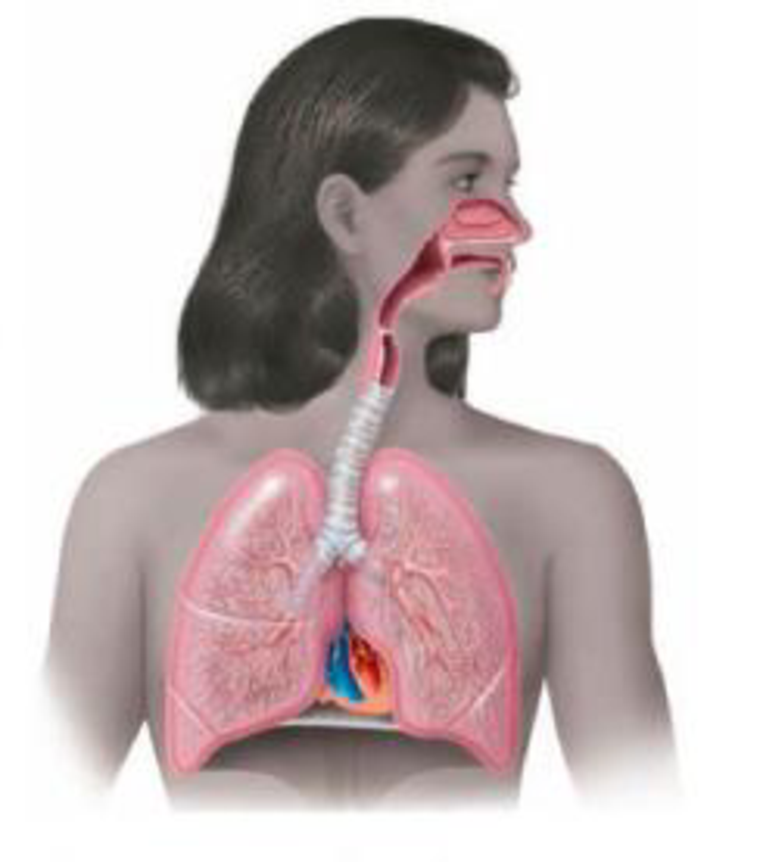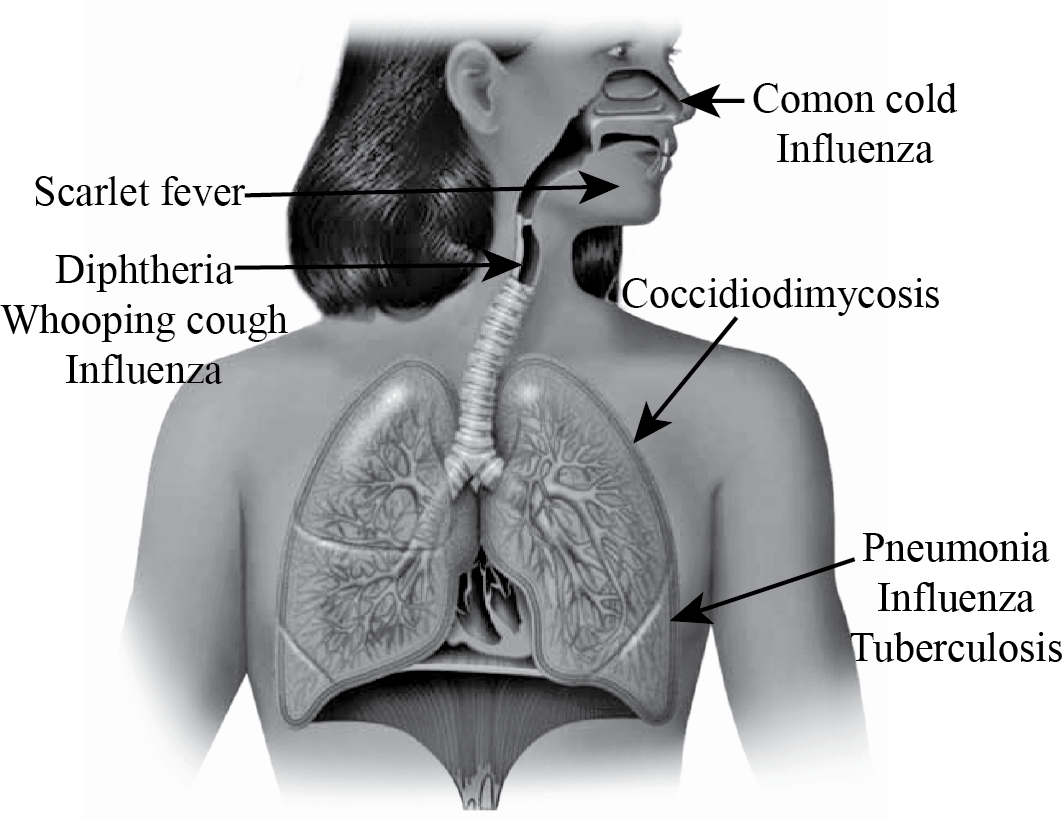
DRAW IT Show the locations of the following diseases: common cold, diphtheria, coccidioidomycosis, influenza, pneumonia, scarlet fever, tuberculosis, whooping cough

To determine:
The location of following diseases of common cold, diphtheria, coccidioidomycosis, influenza, pneumonia, scarlet fever, tuberculosis and whooping cough.
Concept introduction:
Respiratory system consists of two parts, lower and upper parts. Bacteria and virus affects both the parts but lower parts may affects highly than upper parts.
Explanation of Solution
Diagram:
Diseases of Respiratory system

Respiratory system causes diseases which are affected by both bacteria and virus. The upper part causes disease like common cold, diphtheria and whooping cough. Common cold is a viral infection of the upper respiratory system. It is caused by rhinovirus and coronavirus. Scarlet fever caused by streptococcal exotoxin, affects the skin by reddening of tongue and peeling of affected skin. Diphtheria caused by Corynebacterium diphtheria, causes sore throat and swelling of neck. Whooping cough is another disease caused by Bordetella pertussis, tracheal cytotoxin. It affects the cilia and damages the respiratory passages.
Pneumonia causes lower respiratory infection and leads to same symptoms as cold, cough, headache and fatigue and so forth. Pneumonia is the disease of the lower respiratory system. Influenza is characterized by fever, chills, muscular aches and headache. Mycobacterium tuberculosis is a gram positive, rod and an obligate aerobe that causes tuberculosis. It is also a lower respiratory infection.
Many virus can enter into our respiratory system although there is a constant inhibition of pathogens by cilia and mucous membrane. Mostly the upper part is affected but only the lower part is affected by virus infection.
Want to see more full solutions like this?
Chapter 24 Solutions
Microbiology: An Introduction
Additional Science Textbook Solutions
Biological Science (6th Edition)
Laboratory Manual For Human Anatomy & Physiology
Campbell Biology in Focus (2nd Edition)
SEELEY'S ANATOMY+PHYSIOLOGY
Living By Chemistry: First Edition Textbook
Biology: Life on Earth with Physiology (11th Edition)
- Not part of a graded assignment, from a past midtermarrow_forwardNoggin mutation: The mouse, one of the phenotypic consequences of Noggin mutationis mispatterning of the spinal cord, in the posterior region of the mouse embryo, suchthat in the hindlimb region the more ventral fates are lost, and the dorsal Pax3 domain isexpanded. (this experiment is not in the lectures).a. Hypothesis for why: What would be your hypothesis for why the ventral fatesare lost and dorsal fates expanded? Include in your answer the words notochord,BMP, SHH and either (or both of) surface ectoderm or lateral plate mesodermarrow_forwardNot part of a graded assignment, from a past midtermarrow_forward
- Explain in a flowcharts organazing the words down below: genetics Chromosomes Inheritance DNA & Genes Mutations Proteinsarrow_forwardplease helparrow_forwardWhat does the heavy dark line along collecting duct tell us about water reabsorption in this individual at this time? What does the heavy dark line along collecting duct tell us about ADH secretion in this individual at this time?arrow_forward
 Comprehensive Medical Assisting: Administrative a...NursingISBN:9781305964792Author:Wilburta Q. Lindh, Carol D. Tamparo, Barbara M. Dahl, Julie Morris, Cindy CorreaPublisher:Cengage Learning
Comprehensive Medical Assisting: Administrative a...NursingISBN:9781305964792Author:Wilburta Q. Lindh, Carol D. Tamparo, Barbara M. Dahl, Julie Morris, Cindy CorreaPublisher:Cengage Learning Medical Terminology for Health Professions, Spira...Health & NutritionISBN:9781305634350Author:Ann Ehrlich, Carol L. Schroeder, Laura Ehrlich, Katrina A. SchroederPublisher:Cengage Learning
Medical Terminology for Health Professions, Spira...Health & NutritionISBN:9781305634350Author:Ann Ehrlich, Carol L. Schroeder, Laura Ehrlich, Katrina A. SchroederPublisher:Cengage Learning Microbiology for Surgical Technologists (MindTap ...BiologyISBN:9781111306663Author:Margaret Rodriguez, Paul PricePublisher:Cengage Learning
Microbiology for Surgical Technologists (MindTap ...BiologyISBN:9781111306663Author:Margaret Rodriguez, Paul PricePublisher:Cengage Learning





